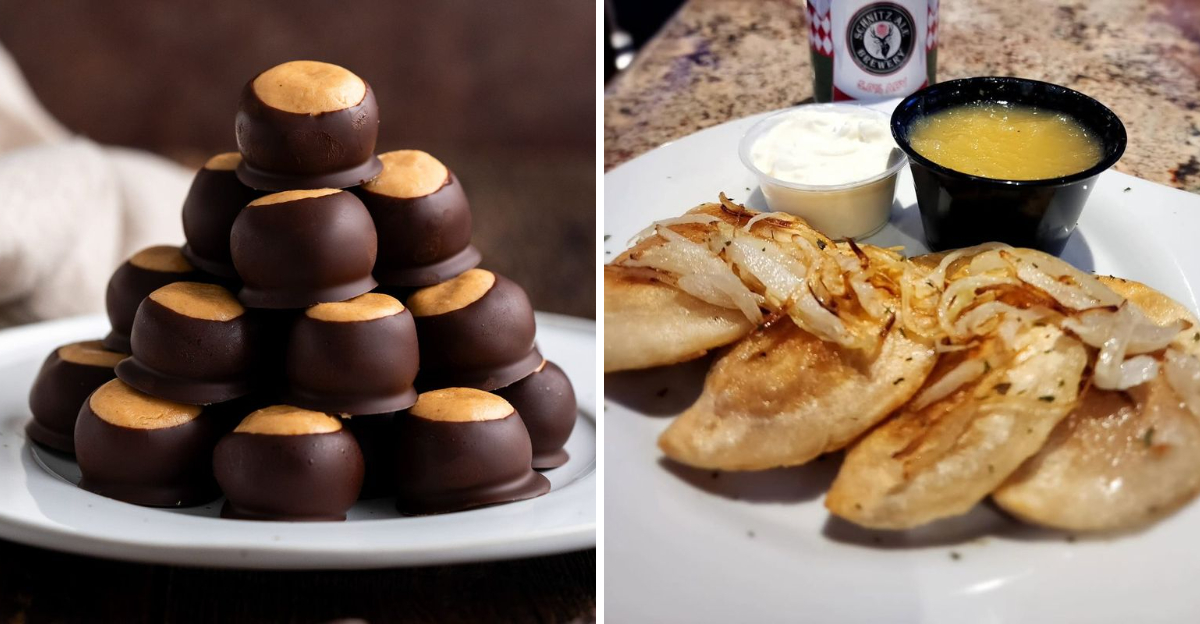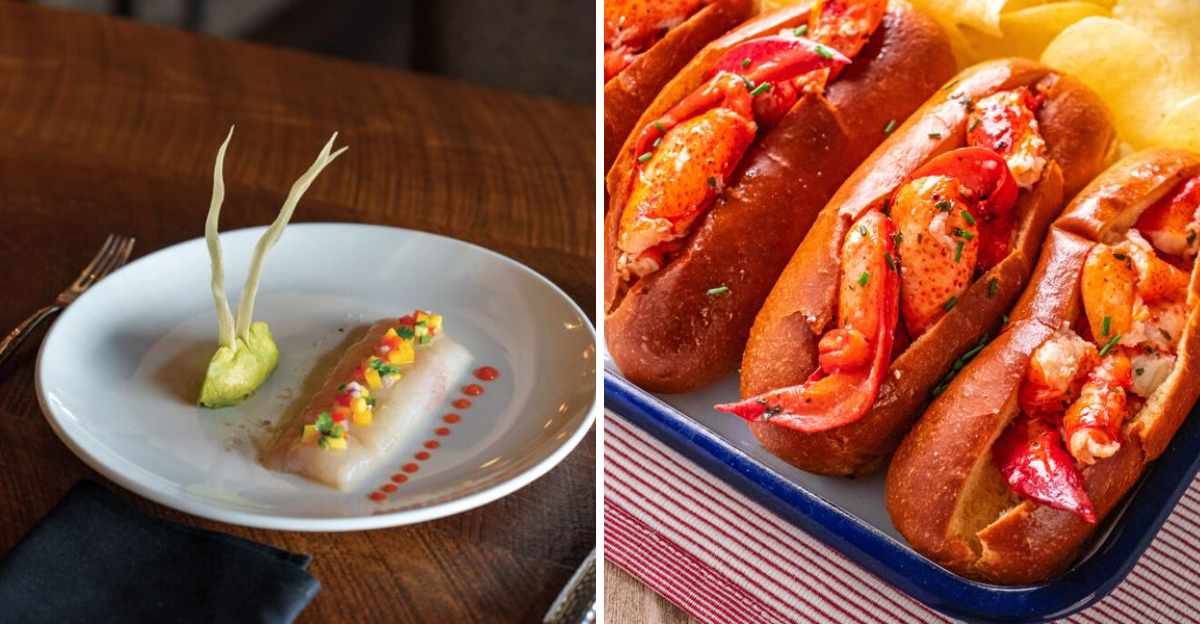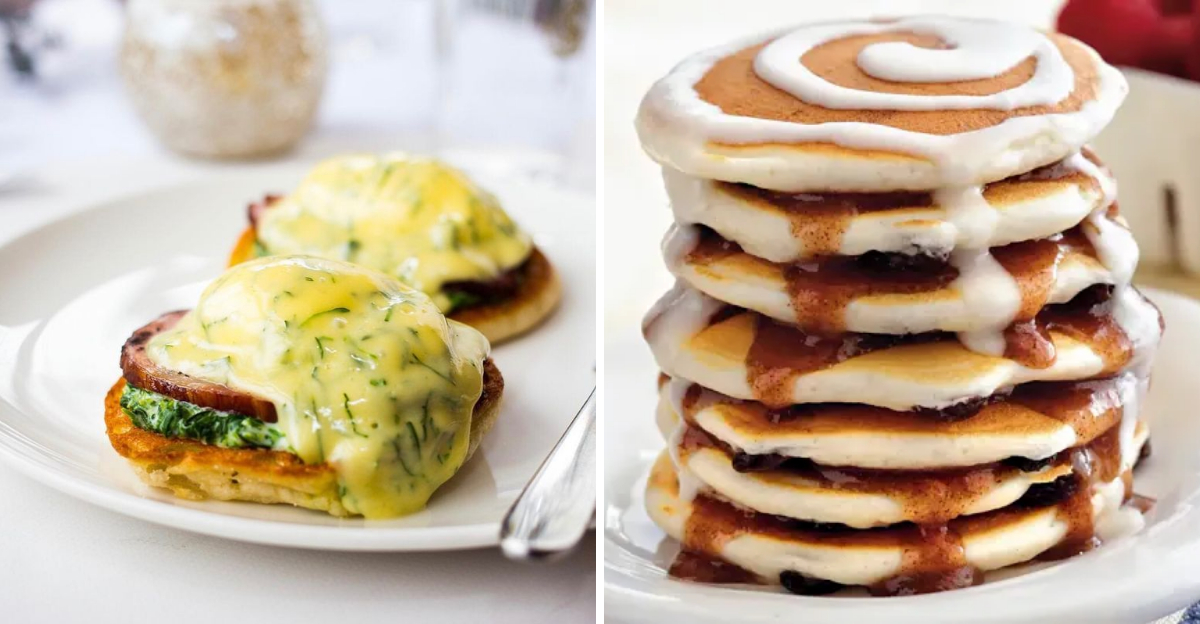20 Foods You Should Avoid Cooking In Aluminum Foil
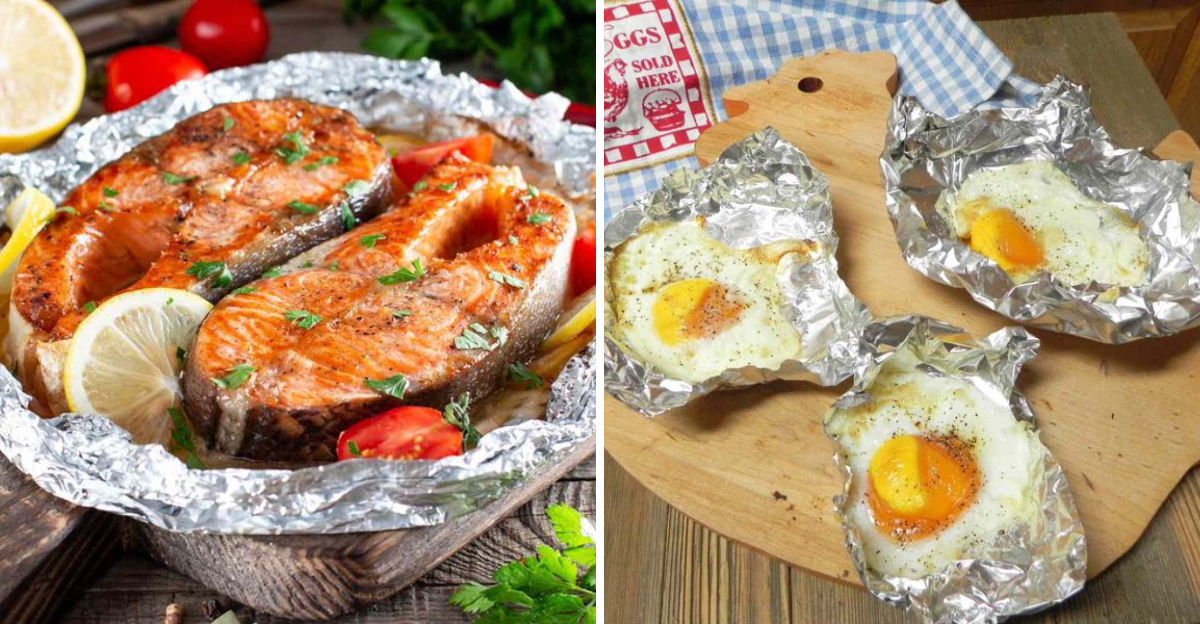
Aluminum foil seems handy for everything, but some foods turn that shortcut into a flavor fail. When acid, salt, or steam meet foil, you can end up with metallic notes, gray streaks, and soggy textures. A few smart swaps keep your dishes bright, crisp, and safe. Use this list to avoid the traps and cook with confidence every time.
1. Tomato-Based Dishes

Tomato sauces, shakshuka, and pizza packets can go sideways fast when they touch aluminum foil. The natural acidity reacts with the metal, leaving a metallic taste and streaky gray patches on the food. You might notice dull, flat flavors where you expected bright, fresh tomato.
For vibrant results, switch to a stainless pan or make parchment packets. You will protect acidity and maintain clean, lively notes. Your sauce will stay red and glossy, not cloudy or marred by off flavors.
2. Citrus-Marinated Proteins
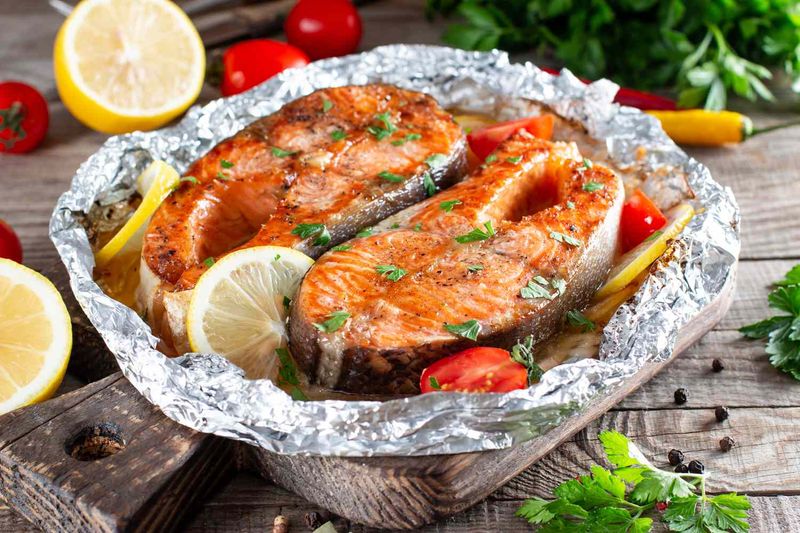
Lemon chicken or fish in lime tastes zippy, but not when cooked in foil. Citrus speeds up aluminum leaching, adding a tinny bite that lingers. You lose the clean citrus pop you were craving, and the texture may suffer.
Use glass or ceramic bakeware for a pure, bright finish. Or go parchment en papillote for gentle steam and no metallic hitch. You will keep citrus aroma intact and the protein tender and flaky.
3. Vinegar-Heavy Veggies

Pickled beets and vinegar-forward BBQ slaw packets can discolor when cooked in foil. Vinegar reacts with aluminum, shifting both color and taste. Instead of tangy and bright, the veggies can turn dull and oddly metallic.
Swap to enameled or stainless pans for dependable results. You will preserve the jewel-tone beets and the lively vinegar bite. Cleanup stays easy, and your flavors remain sharp and balanced.
4. Wine-Braised Dishes
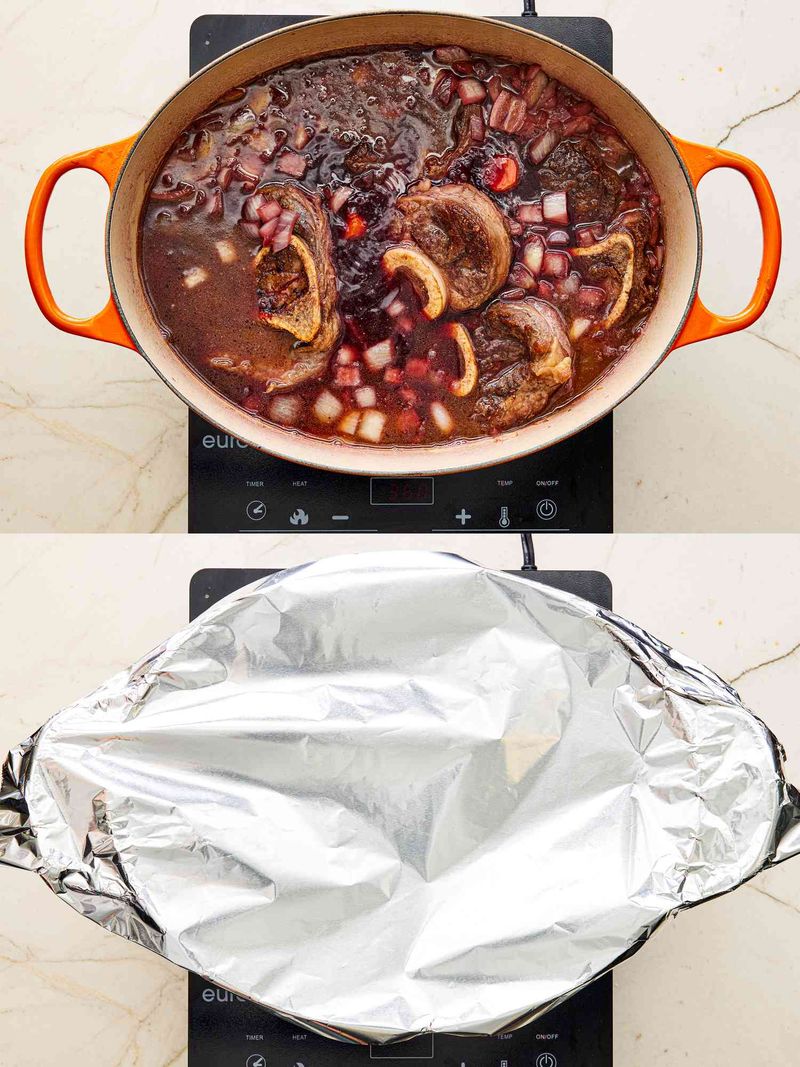
Wine brings acidity and alcohol, and both clash with foil under heat. You risk off flavors, black residue on the foil, and a murky finish. Braises like coq au vin deserve clarity, not a metallic skid mark.
Use a Dutch oven with a tight lid to lock in moisture and keep flavors pure. The sauce reduces cleanly and tastes rounded, not harsh. Your braise will emerge glossy, complex, and comforting.
5. Soy-Sauce or Miso Marinades
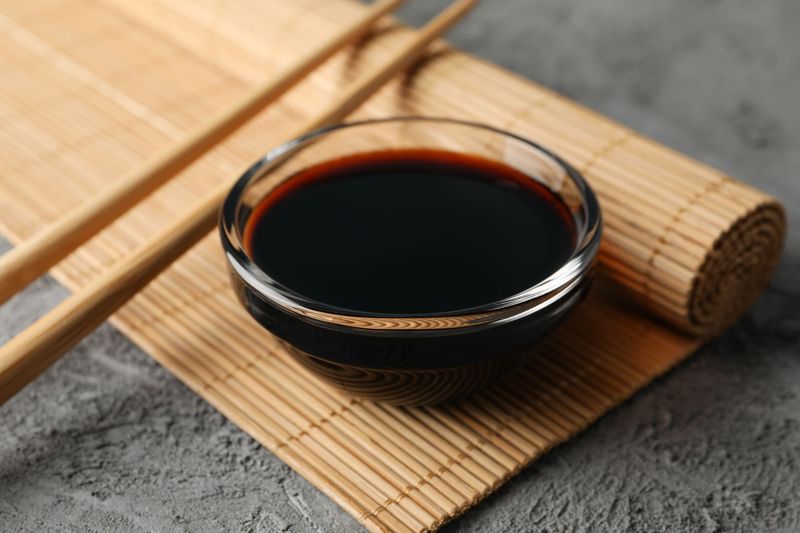
Salty, slightly acidic soy and miso marinades can pull aluminum into your food. The result tastes harsher and less balanced, with a faint metallic edge. That nuanced umami turns muddy when foil gets involved.
Choose cast iron or stainless for even heat and clean flavor. You will get better browning and a savory glaze that stays intact. Your marinade tastes deeper, not distorted.
6. Salty Brined Meats

Brines pack salt that increases reactivity with aluminum. Foil can pit, and your carefully seasoned meat may pick up a metallic hint. Texture also suffers when steam gets trapped too tightly.
Use a roasting rack in a steel or enameled pan for steady airflow. The skin or crust dries and browns, not steams. You will keep that juicy interior without sacrificing flavor or texture.
7. Rhubarb

Rhubarb’s oxalic acid plays poorly with aluminum foil. You can get a metallic aftertaste and dull, gray patches that look unappetizing. The tart sparkle you expect becomes muted and flat.
Switch to ceramic or glass to keep rhubarb ruby and lively. You will taste clean tartness and keep textures intact. Desserts and compotes stay vivid and bright.
8. Sauerkraut and Pickles

Fermented acidity plus salt makes foil a bad partner for kraut and pickles. Foil packets can yield chemical-tasting fillings and gray edges. The briny snap you want turns muddy and off.
Use parchment or a lidded skillet to keep flavors crisp. Heat gently and retain tang without any metallic hitch. Your reuben or sausage platter will taste clean and bright.
9. Berries and Applesauce Packets

Fruit acids in berries and applesauce can discolor foil and flatten flavors. Instead of bright and juicy, you may taste a faint metallic echo. Colors can fade, and textures go soft and soupy.
Choose a small casserole with a lid for gentle heat. You will protect color and preserve natural sweetness. The fruit stays vibrant, saucy, and fragrant.
10. Onions and Cabbage

Sulfur compounds in onions and cabbage can blacken foil and bring bitter undertones. Foil packs on the grill trap moisture and mute sweetness. You lose the char and crisp edges that make these vegetables shine.
Use a grill basket or cast-iron skillet for smoky browning. Toss with oil and let the heat work for you. You will get sweet, tender bites with real grill character.
11. Cheesy Bakes

Cheese releases oil and steam that cling to foil, then peel and tear. You end up scraping off the top layer and losing that golden cap. The texture gets greasy and uneven instead of creamy and crisp.
Use an oiled baking dish and finish under the broiler. You will keep the browned crust intact and scoop cleanly. Every bite tastes rich and melty, not stuck to foil.
12. Eggs

Egg proteins bond to foil and tear easily, especially in packets. You will wrestle with sticking and lose tender curds to the wrapper. The result feels scrambled in all the wrong ways.
Cook in nonstick or well-seasoned cast iron for control. Gentle heat keeps curds soft and glossy. Breakfast slides out clean and tastes like it should.
13. Delicate Fish with Acidic Sauces

Delicate fish steams hard in foil and breaks under pooled moisture. Add an acidic glaze, and you will taste metallic notes and lose clean flakes. The sauce can separate and feel sticky instead of silky.
Go with parchment packets or open-pan roasting for crisp edges. You will keep aromas fragrant and textures delicate. The fish tastes bright, fresh, and lightly caramelized.
14. Garlic Confit and Long Oil Roasts

Extended heat plus oil in tight foil can taste tinny and murky. Delicate garlic flavors dull, and the oil picks up off notes. You also risk uneven cooking and messy leakage.
Use a small glass jar or ceramic dish for slow, low confit. You will keep flavors buttery and sweet without metallic drift. The oil stays clean, perfect for later use.
15. Spicy Chile Pastes

Harissa and gochujang are acidic, salty, and sticky. On foil, they stain, skew flavors, and can leave a metallic nudge. Instead of deep heat and brightness, the glaze turns muddy.
Line a sheet pan with parchment for reliable caramelization. You will get tacky, lacquered edges without tearing. Every bite pops with spice and balanced sweetness.
16. Potatoes Wrapped Tight
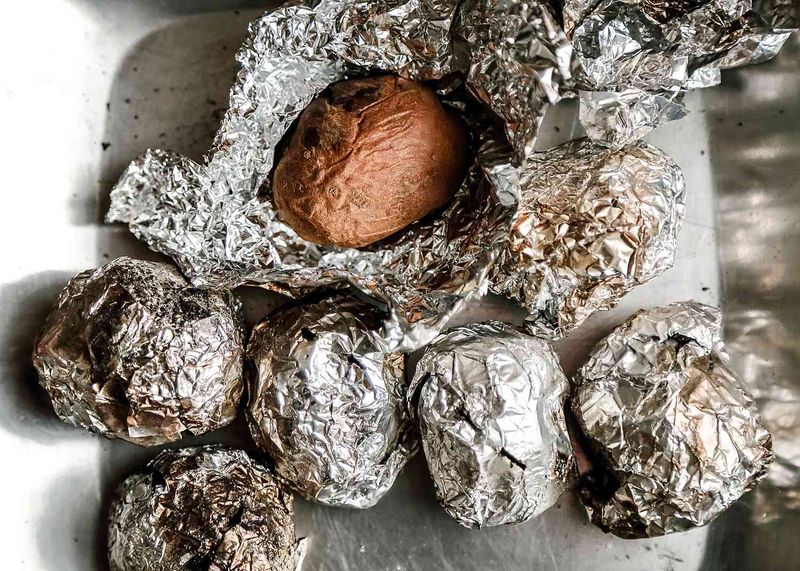
Wrapping potatoes tightly in foil traps moisture. You get gummy interiors and soft skins that never crisp. It is a common habit that dulls flavor and can be risky if the spuds sit warm too long.
Bake unwrapped on a rack, with oil and salt on the skin. You will get fluffy centers and shattering crust. Finish with butter and herbs for restaurant-level texture.
17. BBQ Ribs with Tangy Mop Sauce
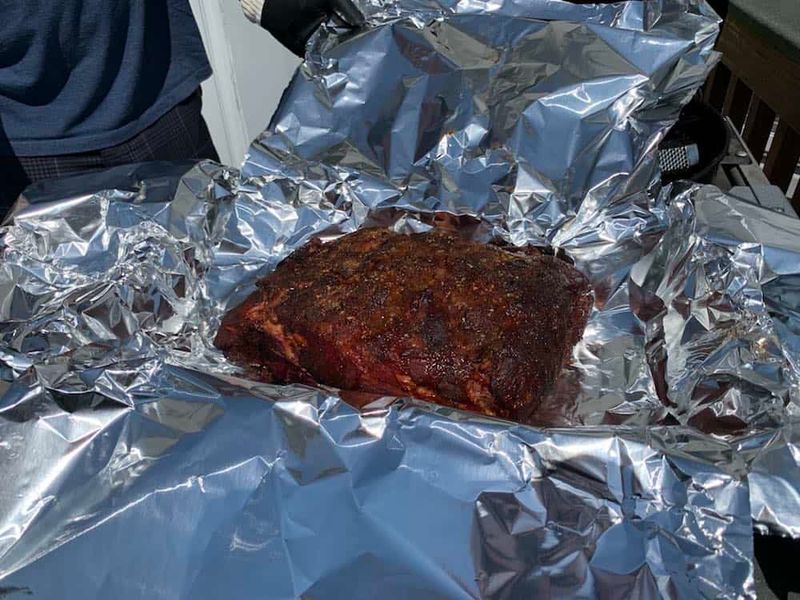
The classic Texas crutch with foil can steam away bark. Add a vinegar mop, and you invite reactivity and washed-out flavor. The ribs end up soft but not proud of their crust.
Choose butcher paper for a breathable wrap, then finish unwrapped. You will set the bark and keep smoke character intact. The tang stays lively without metallic undertones.
18. Sticky Glazes

Sugary glazes burn onto foil and rip when you lift. You lose that lacquered finish and half the skin. The balance swings bitter as the sugar scorches on hot metal.
Use parchment or a silicone mat for clean release. You will get sheen, caramel notes, and intact pieces. The glaze clings to the food, not the pan.
19. Shellfish in Tomato or Wine Broth

Shellfish shine with briny sweetness that foil can dull. Tomato or wine broth adds acid that reacts under heat, discoloring shells and skewing flavor. The broth can taste flat when it should sparkle.
Use a covered stainless or enameled pot for clean, ocean-bright results. You will keep shells pretty and the broth nuanced. Dunk bread in a sauce that sings, not sighs.
20. Heavily Salted Veggie Packs
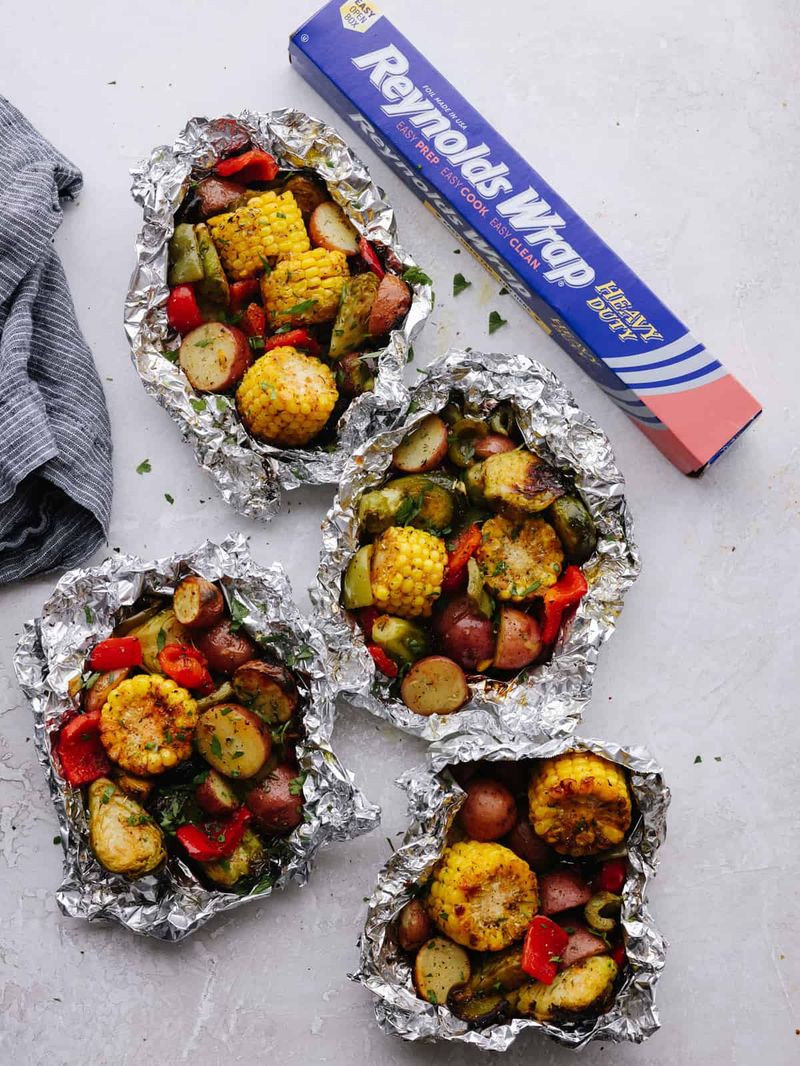
Heavy salt plus steam in foil makes vegetables bland, gray, and soft. Zucchini and mushrooms weep liquid without browning. You miss the concentrated sweetness and crisp edges you wanted.
Sauté in a skillet or roast on parchment to drive off moisture. You will get caramelized spots and tender bite. Season at the end to keep flavors bright and focused.

